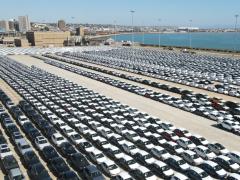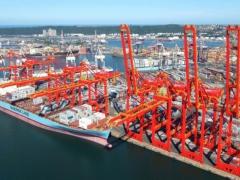The transport department’s ‘Operation Vala Zonke’ pothole repair campaign has gained momentum as reports pour in on the new South African National Roads Agency SOC Limited (Sanral) pothole mobile app.
According to Sanral, repairs are under way at municipalities across the country after transport minister Fikile Mbalula recently launched the Sanral pothole app and urged the public to alert the government to potholes so that it could fix them timeously.
The roads agency said regular routine road maintenance to ensure rain or storm water flowed off the road surface as quickly as possible was key to pothole prevention.
Western Region manager Randall Cable said that while poor maintenance was often cited as the main cause of potholes, the damage caused by heavy vehicles, especially overloaded vehicles, was a major contributing factor.
“Heavy vehicles using roads which were not designed to carry such loads are a serious concern. Overloaded heavy vehicles cause the greatest amount of damage to roads, even in a single instance of transgression. A single overloaded axle and associated wheel pressures that are above the permissible limits will have a detrimental impact on the asset value of the road, causing longer-term damage,” Cable said.
Tackling the pothole pandemic was not a simple matter of slapping on a hot-asphalt band-aid and steering away from the problem, he added.
The app, which is available for IOS and Android phones, has moved beyond its bumpy start, when it wasn’t available for Android for a few days. Technical glitches in the registration and sign-in process - and the ‘select an issue’ tab - have been ironed out and the app is now running on both platforms, according to Sanral App project manager Andrew Mac Kellar.
“The pothole reporting function is running smoothly now, although we are still working on the feedback function. The important thing is that potholes are being reported to the maintenance teams concerned and we are streamlining that process further.”
The process of fixing a pothole is down to an exact science as follows:
• The pothole is cleaned out: dirt and debris in the pothole are removed. If pieces of broken asphalt are mixed in with the new asphalt it can weaken the repair.
• The pothole is reshaped: straight edges are cut “around” the pothole and old asphalt is removed.
• Primer and new asphalt: the pothole is primed, and new asphalt is used for the repair. The asphalt is compacted after being applied to minimise water penetration and increase its resistance. The compaction also creates a bond between the old and new asphalt.
• Clean-up: any debris left around the repair is removed. Most pothole repairs can be driven on immediately.
Otsile Mpela, MD of Bafenyi Asphalt, said poor workmanship was one of the greatest obstacles to achieving quality pothole fixing and edge-break repairs.
“It is imperative that the correct procedure is applied. The first thing to do is to develop a checklist of the equipment and tools required, including good quality cold asphalt,” he said.
According to Mbalula, the cost of fixing a single pothole is between R700 and R1 500 per square metre.
The free Sanral Pothole app has received a ratings and review score of 2.9 out of 5, up from 2.3 out of 5 earlier this month.
“The App opens up a little camera which you use to take a picture of the pothole, while the system automatically records the GPS location,” Kellar said.
The information is then assigned to the relevant authority, depending on the location of the road, and the responsible maintenance depot attends to fixing the pothole.
“The person reporting the pothole gets a notification that the report has been received, and one when the pothole has been fixed. Even if a lot of people report the same pothole, they will all receive these notifications,” he added.
Download the app for Android and for IOS via the Apple iStore.













